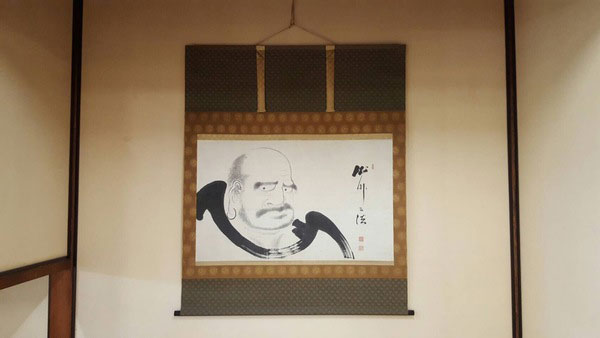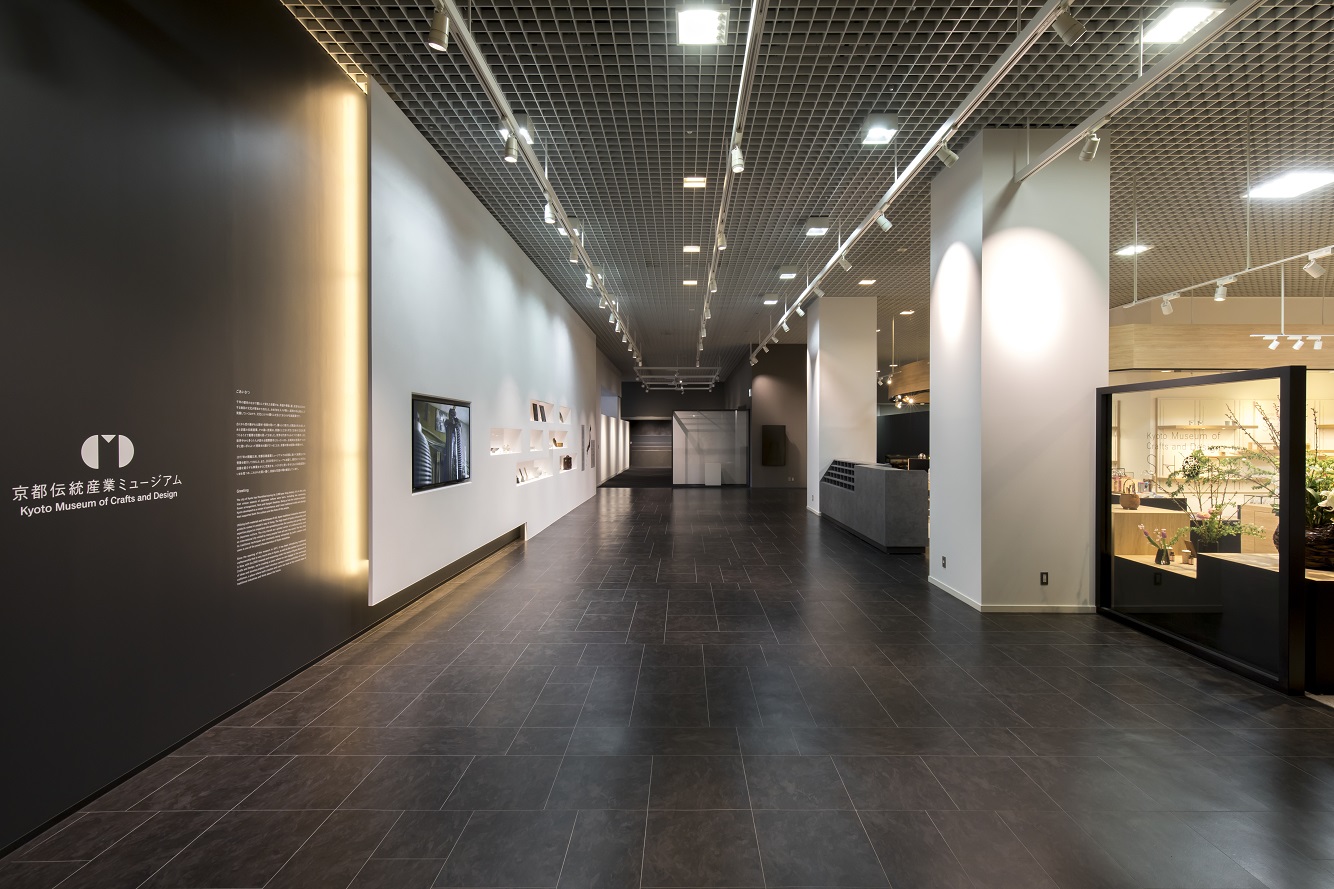
- Other crafts
- Kyoto
Kyo art preservation Kyo hyogu
Techniques refined for a thousand years
Gorgeous and elegant taste just like the town of Kyoto
Description
What is Kyo art preservation ?
Kyoto Art Mountings, called Kyo Hyogu in Japanese,are mountings done in Kyoto prefecture. Hyogu or hyoso is a traditional technique to strengthen and preserve calligraphy works, paintings and the like with paper or cloth and adding decorations to enhance the overall impression of the work. Kyo Hyogu include works other than the typical hanging scroll such as picture frames, screens, scrolls, fusuma sliding doors and single-leaf screens. Hanging scrolls and picture frames are used for decorating Japanese-style rooms, and scrolls, fusuma sliding doors and single-leaf screens are generally used for room partitions or folding blinds. Kyo Hyogu are characterized by their elegant appearance developed and matured over the long history of Kyoto. As a prosperous capital city, there was a high demand for hyogu from the Imperial palace, temples and shrines as well as the head masters of tea ceremony schools. They were also able to obtain high quality materials for the craft, and over the centuries, nurtured by the intellectual people with high aesthetic sense, the artistic quality of Kyo Hyogu became sophisticated. In addition, Kyo Hyogu are very functional, and being easy to roll up, hanging scrolls are space-saving and portable. Fusuma sliding doors and screens are eminently practical and can be used not only for decoration, but also for protection against the wind and cold.
History
Kyo Hyogu have a long history which is said to have begun in the Heian period. Since Kyo Hyogu were introduced to Japan along with the introduction of Buddhism from China, at that time they were used in kyokan, scrolls on which sutras were written. Furthermore it is said that with the rise of Buddhism, the original form of hanging scrolls depicted painted images of the Buddha and were used for prayer. Hyogu, also known as hyoso, developed along with the history of Kyoto, a flourishing center of politics, culture and religion. It is also said that the climate of Kyoto, high humidity, rapid changes in temperature and less wind, was suited for the production of Kyo Hyogu. With the appearance of tokonoma alcoves and the spread of paintings, hyoso began to be made for calligraphic works and paintings. In addition, the tea ceremony flourishing from the Muromachi period to the Edo period, created a demand for characteristically elegant works. Later, Kyo Hyogu became known as fine hyogu with a particularly refined taste and was designated as a traditional craft of Japan in 1997. Even today skilled artisans demonstrate their traditional highly accomplished techniques in the wide range of fields from utility goods, arts and crafts, to the restoration of antiques.
General Production Process
- 1. Choosing the cloth
A typical Kyo Hyogu will be created around the honshi, which is a work of calligraphic or painted art, Buddhist painting, or other art work. Japanese traditional paper, cloth, and paste is used to mount the honshi. The mounting is done by repeatedly dampening with water and drying, and going through many complicated stages. Firstly, suitable cloth to enhance the beautiful work of the honshi is chosen. There are 4 types of cloth: hiraori (flat weave), ayaori (twill weave), shusuori (satin weave) and karamiori (leno weave). Since hanging scrolls are stored rolled up, a thin flexible cloth that does not curl is best suited. This is an important process in which the quality of the hyogu is determined. The cloth must be carefully selected considering the colors, patterns and the whole balance of the honshi and its features.
- 2. The first lining of the cloth (hadaurauchi)
Usuminogami, a thin Japanese traditional paper which has tensile strength and solidity, is often used for the first lining. After cutting the cloth and adjusting the patterns, water is applied to shrink the cloth in advance. The lining paper is chosen for each part, and is cut to size. Paste is equally spread from the center on the lining paper. Then the lining paper is attached to the cloth and fixed by stroking with a brush. This is a process requiring great care and concentration because the artisan is working directly with the honshi and the cloth.
- 3. The second lining of the cloth (mashiurauchi)
The second lining, mashiurauchi is done using a beating brush. For the additional lined paper, misugami, a different type of Japanese traditional paper which is flexible and easily pasted, is often used. The lining paper is selected in the same way as for hadaurauchi, and torn by putting a bamboo spatula on the edge of the lining paper which is dampened with water, so that the fibers stand out. The lining paper is attached only at the fiber parts, so that the thickness doesn’t affect the surface.
- 4. Lining for the outer frame parts of honshi
Lining is carried out to increase the strength and enhance the impression of the total piece.
- 5. Putting the parts together
All the parts are connected while making sure to match the patterns.
- 6. Total lining
A smooth and solid sheet of udashi, a Japanese traditional paper that contains white clay, is used to line the whole piece.
- 7. Sewing on the futai
A futai is sewn to the hyomoku using raw silk. Futai is a long decoration hanging on the upper part of a hanging scroll, and hyomoku is a semicircular wooden bar placed on the top of the hanging scroll.
- 8. Finishing
The piece is finished after installing a scroll bar and strings.
- 9. Inspection
A final inspection is carried out ensuring good horizontal balance when hanging.
Where to Buy & More Information
Kyoto Museum of Crafts and Design

-
Address
-
Tel.+81-75-762-2670
-
ClosedDecember 29 to January 3
-
Business Hours9am to 5pm
-
Website
See more Other crafts
- Edo kiriko cut glass
- Koshu lacquered deer leather
- Kyo folding fans
- Marugame uchiwa fans
- Boshu uchiwa fans
- Gifu lanterns
- Yamaga lanterns
- Kyo uchiwa fans
- Tendo Japanese chess pieces
- Edo glass
- Edo patterned paper
- Yame lanterns
- Owari Cloisonné
- Fukuyama Koto (Japanese Harp)
- Kyo art preservation
- Banshu fly-fishing flies
- Woodblock prints
- Koshu hand-carved seals
- Edo Hyogu (Art Mountings)
- Edo tortoise shell crafts
- Etchu Fukuoka Sedge Hats
- Gifu Japanese Umbrellas
- Nagasaki tortoise shell crafts
- Nagoya Sekku Kazari
- Sanshin
- Tokyo Koto (Japanese Harp)
- Tokyo Shamisen































































































































































































































































































